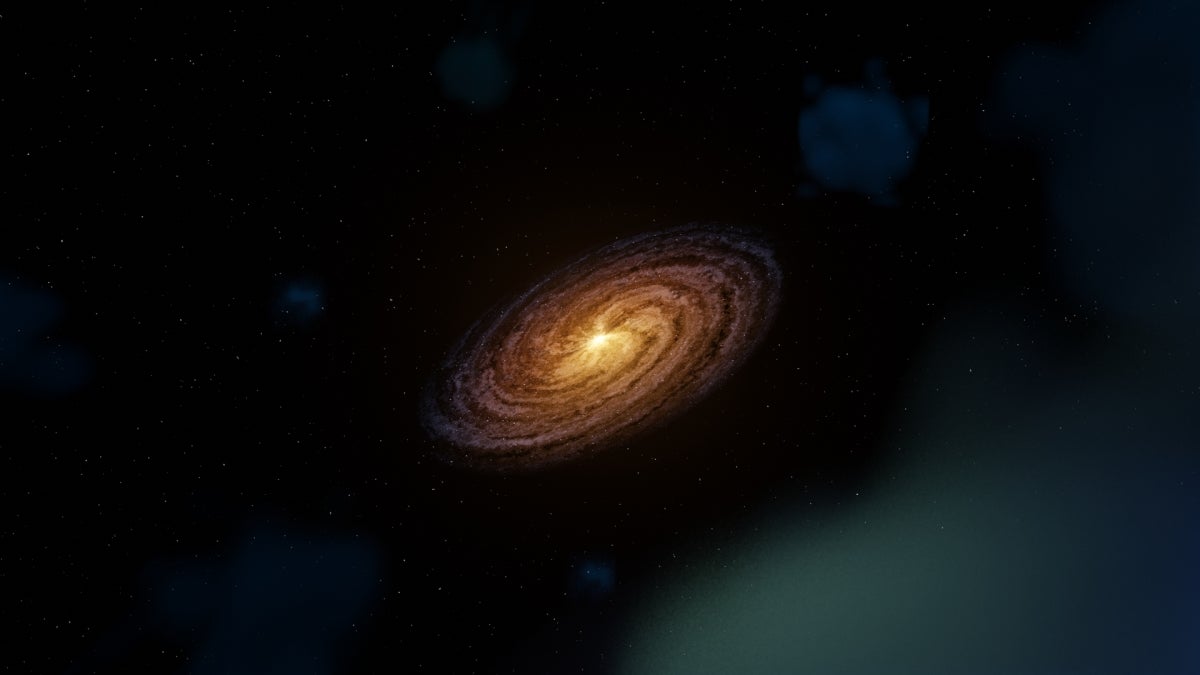ASU astronomer finds star fuel surrounding galaxies

Illustration of the faint fuel reservoirs that surround galaxies, allowing them to form new stars and planetary systems. Image by Shireen Dooling/ASU
Most galaxies, including our own, grow by accumulating new material and turning them into stars — that much is known. What has been unknown is where that new material comes from and how it flows into galaxies to create stars.
In a recently published study, Arizona State University astronomer Sanchayeeta Borthakur has identified the faint fuel reservoirs that surround galaxies, and how this fuel can fall into galaxies, allowing them to form new stars and planetary systems. Her research has been published in the American Astronomical Society’s Astrophysical Journal.
Previous research in the field of star formation suggested that some galaxies are producing more stars than what their reserve of star-forming gas would allow. This implied to Borthakur, who is an assistant professor at ASU’s School of Earth and Space Exploration, that new gas must be coming into the galaxies and supporting the formation of new stars and planets.
“Observations of galaxies are similar to looking through an airplane window at night and seeing bright city lights surrounded by darkness. Finding this fuel source is like discovering that in the darkness lies the farms and supply routes that support the populations in the cities,” explains Borthakur.
To determine where the gas might be originating, Borthakur used a statistical method known as cross-correlation (to measure the association between two quantities), and data from two publicly available astronomy catalogues: the ALFALFA survey from the Arecibo telescope and the Survey of the Low-Redshift Intergalactic Medium from the Hubble Space Telescope’s Cosmic Origins Spectrograph. With those data, she was able to quantify how gas-rich galaxies are associated with clouds seen in the intergalactic medium.
“It’s like discovering the existence and the location of gas stations in an image of a city full of vehicles,” says Borthakur.
For next steps, she hopes to identify the pathways through which these gas clouds can reach the inner regions of the galaxies where stars are formed.
“Galaxies like ours will continue to grow by forming many more solar systems as new material comes in,” she says. “Understanding the source of the star fuel allows us to predict if new stars will be formed in the future.”

Animation of faint fuel reservoirs surrounding a galaxy, allowing it to form new stars and planetary systems. Credit: Shireen Dooling/ASU
More Science and technology

ASU postdoctoral researcher leads initiative to support graduate student mental health
Olivia Davis had firsthand experience with anxiety and OCD before she entered grad school. Then, during the pandemic and as a…

ASU graduate student researching interplay between family dynamics, ADHD
The symptoms of attention deficit hyperactivity disorder (ADHD) — which include daydreaming, making careless mistakes or taking…

Will this antibiotic work? ASU scientists develop rapid bacterial tests
Bacteria multiply at an astonishing rate, sometimes doubling in number in under four minutes. Imagine a doctor faced with a…